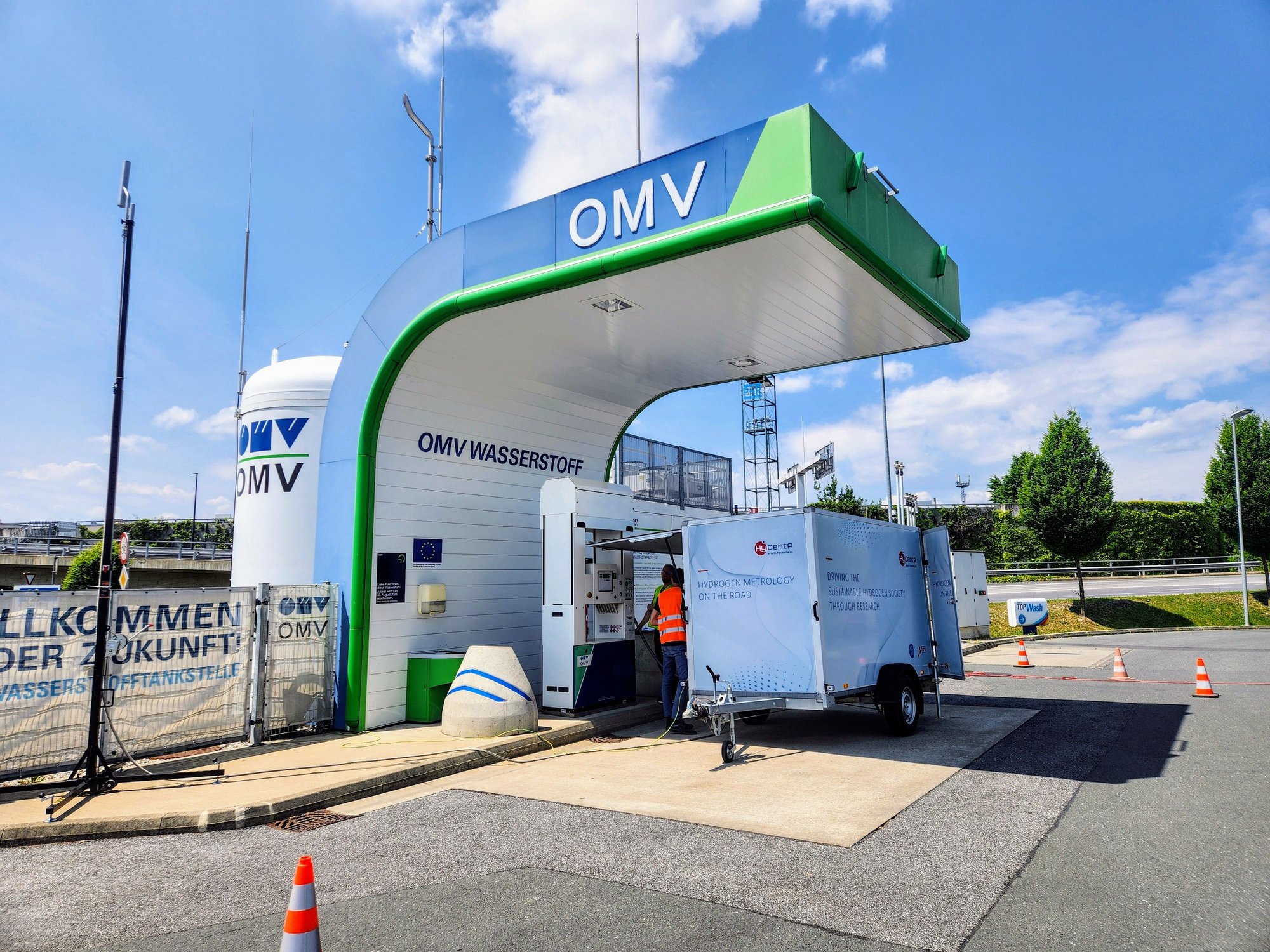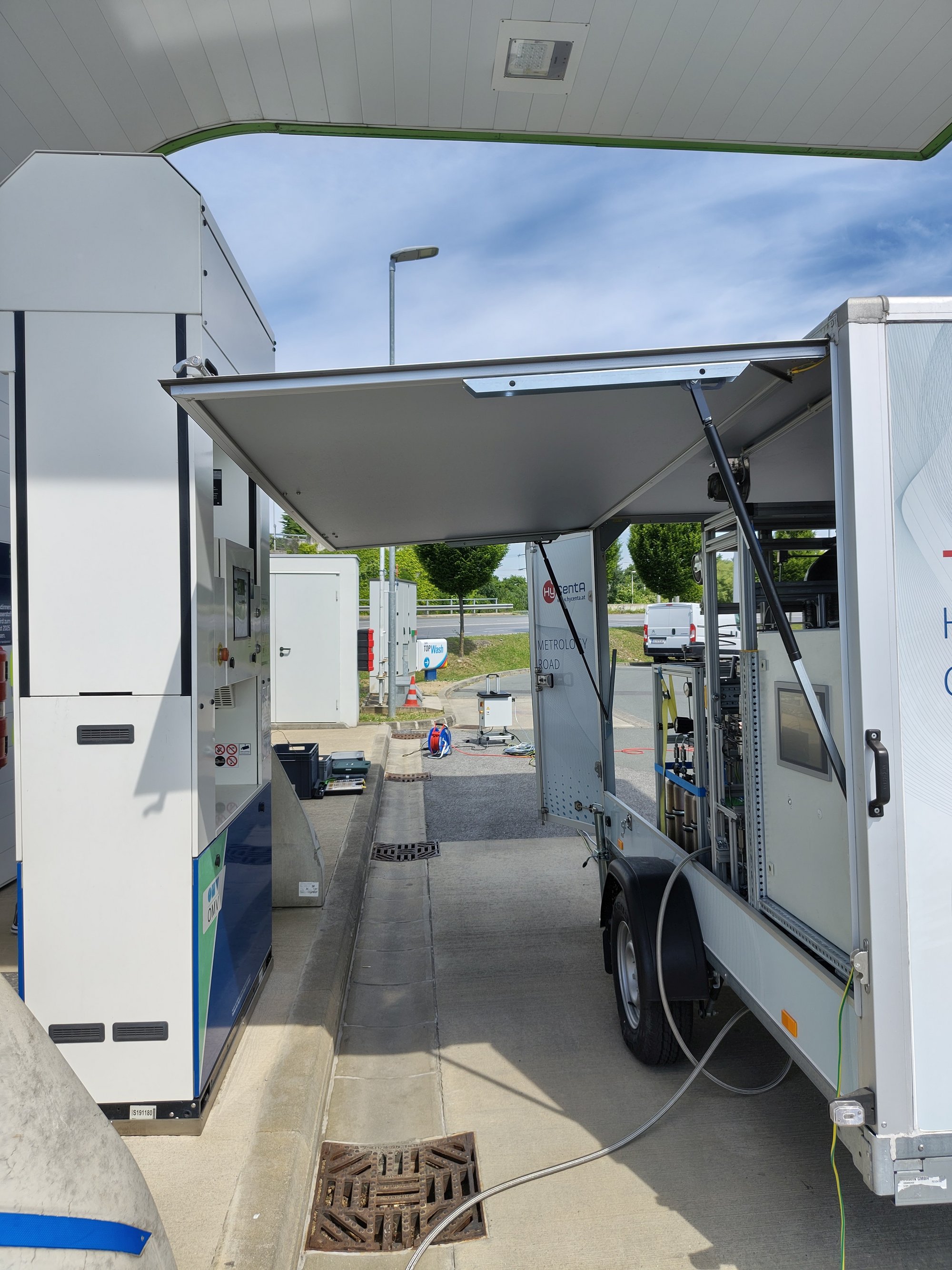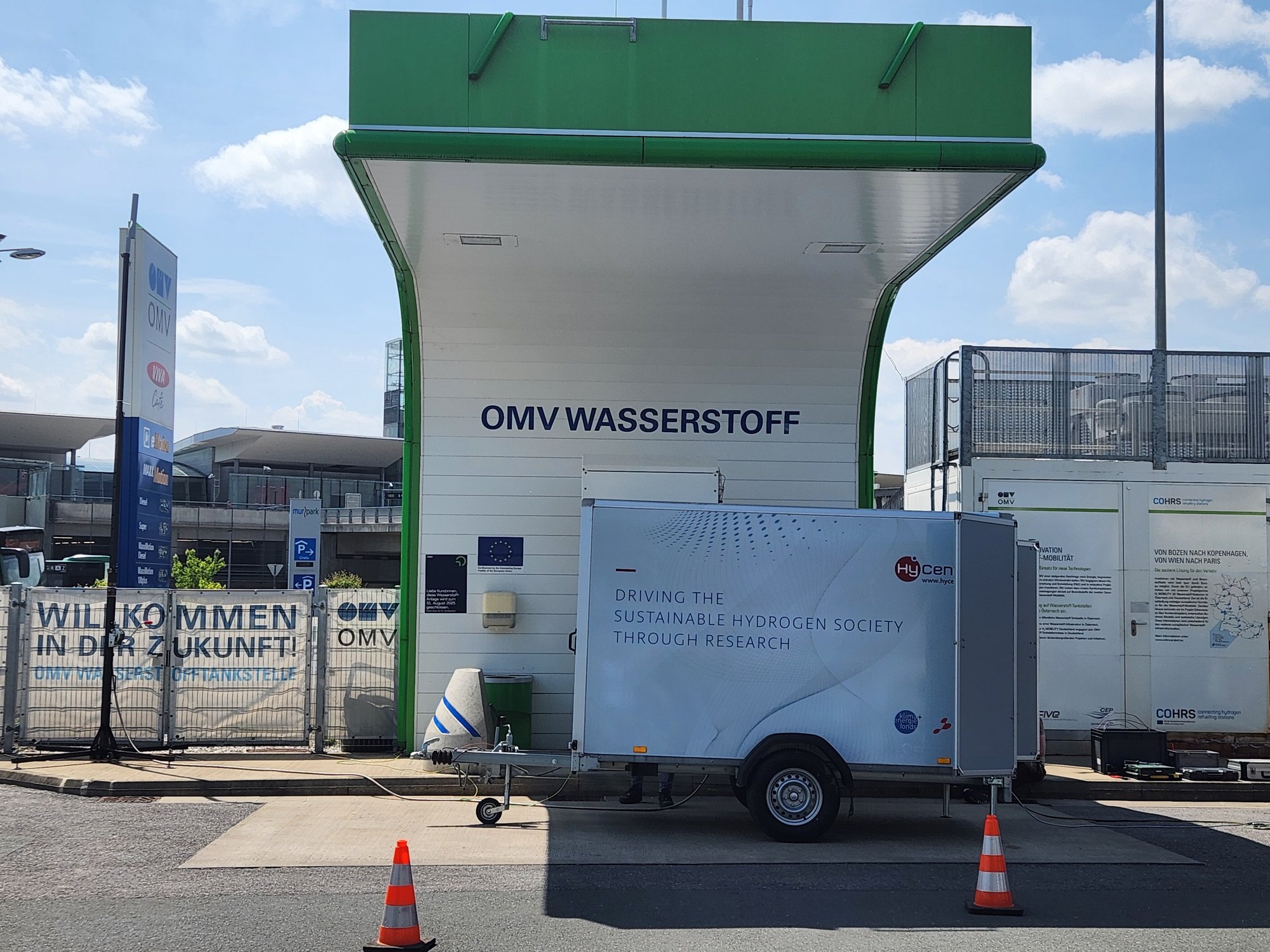Austria’s First Legal Metrology Standard for Hydrogen Refueling Stations Successfully Tested
Laying the Foundation for Trust in Hydrogen Mobility
In every energy system, certification and legal metrology are vital components of trustworthy service – especially when introducing new energy carriers such as hydrogen. For hydrogen mobility to succeed, transparent, traceable, and accurate measurement of both quantity and quality is crucial to ensure fair pricing and to build end-user confidence.
Until now, Austria lacked a certified method to verify the amount of hydrogen dispensed at refueling stations. This innovation changes that: with this tested and certified system, hydrogen quantity can now be officially verified for conformity assessment purposes.
Meeting the Measurement Challenge of Hydrogen
Calibrating the hydrogen mass flow rate at the refueling pump is technologically challenging, primarily due to the extremely low density of hydrogen – just ~90 grams per cubic meter at ambient conditions. Conventional gravimetric methods used for natural gas calibration (which is roughly eight times denser) are insufficiently accurate for hydrogen applications.
Instead, the system relies on a pVT (pressure–volume–temperature) measurement principle, in which hydrogen mass is calculated using pressure (up to 700 bar), temperature, and a known tank volume. However, this indirect measurement method requires extremely precise instrumentation, making it a novel and highly demanding metrological task.
HyCentA’s enhanced pVT approach has now proven to be reliable, robust, and suitable for practical use in the field – setting a new standard for H₂ calibration across Europe.
Key Highlights
- Fast and field-ready: The full legal calibration procedure – 3x full refueling quantity, 3x half quantity, 3x MMQ (Minimum Measured Quantity) – can be completed on-site in just a few hours.
- Certified accuracy: The system achieves a maximum measurement uncertainty of only 0.4% or 20 grams, as evaluated and certified by PTB Braunschweig, qualifying it for official use in conformity assessments.
- Cost-efficient and low-disruption: The method is designed to minimize downtime –refueling stations remain operational during most of the calibration campaign, ensuring only minimal interference with regular business operations.
First Combined Verification of Quantity and Quality
In parallel to the quantity calibration, a hydrogen quality sample was also drawn and is now undergoing analysis at the HyCentA’s Gas Quality Laboratory, following ISO 14687 Grade D standards. This marks the first time in Austria that both quantity verification and quality sampling have been performed in a single integrated on-site process.
Accelerating the Hydrogen Rollout
These new capabilities in hydrogen measurement and certification are essential building blocks for the broader rollout of hydrogen infrastructure. They overcome one of the key technical barriers to accurate hydrogen accounting and pave the way for secure and fair hydrogen transactions across the energy market.
Developed as Part of UpHy I & II
This milestone was achieved as part of the UpHy I & II projects, funded by the Climate and Energy Fund and the FFG Energy Model Region initiative.
Project Partners:
- OMV Downstream GmbH
- V&F Analyse- und Messtechnik GmbH
- WIVA P&G
- Energieinstitut an der JKU Linz
- Chair of Energy Network Technology at Montanuniversität Leoben




